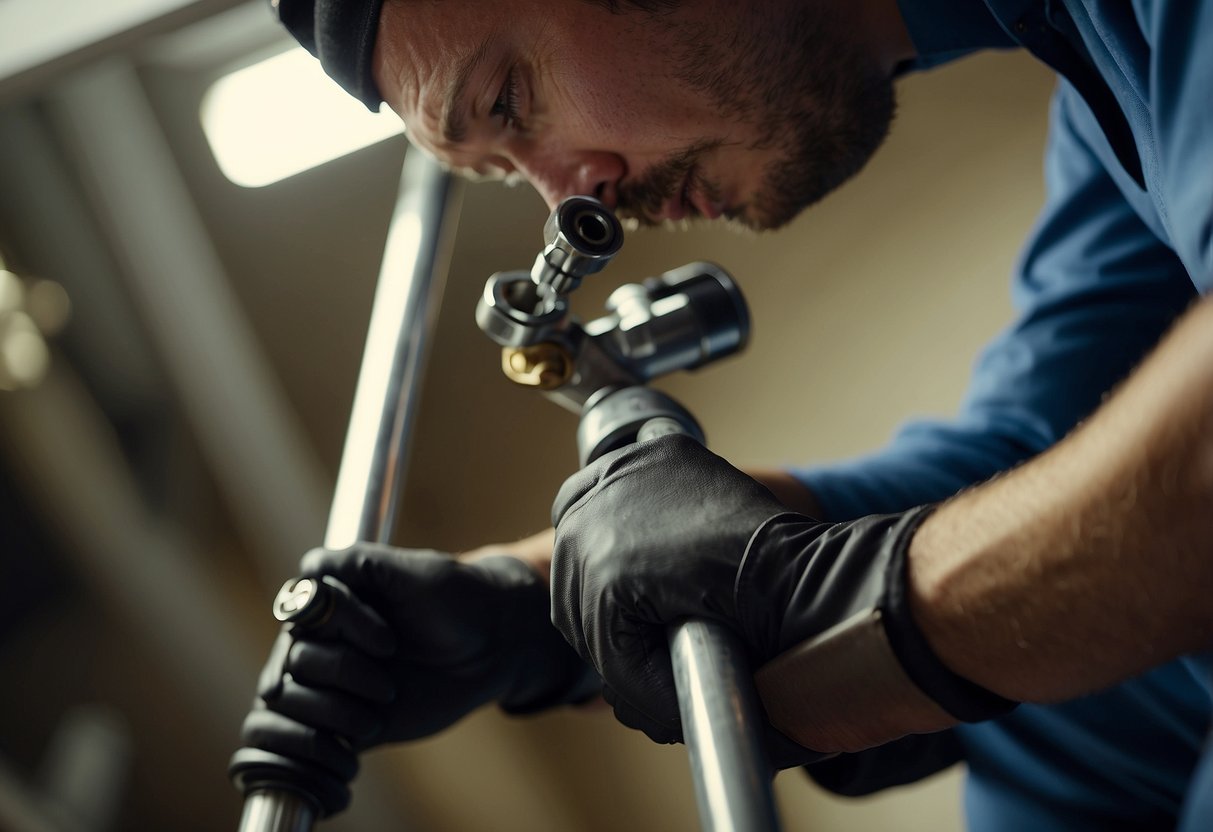The Best DIY Plumbing Tools: Essential Reviews and Usage Guide
Using Plungers and Augers
Plungers are essential for clearing clogs. A cup plunger works well on sinks, while a toilet plunger, also known as a flange plunger, is ideal for toilets. Proper usage involves creating a seal and applying firm, rhythmic pressure.
For more stubborn blockages, a drum snake or toilet auger is recommended. The drum snake, also known as an auger, can reach further into pipes and dislodge debris that a plunger can’t reach. The toilet auger, specifically designed for toilets, helps navigate the unique curves of the toilet trap.
Chemical Solutions and Natural Remedies
Chemical solutions can be effective but must be used with caution. Commercial drain cleaners can dissolve blockages but may damage pipes over time. Always follow manufacturer instructions and use protective gear.
Natural remedies like baking soda and vinegar provide a safer alternative. This method involves pouring baking soda followed by vinegar down the drain, allowing the mixture to sit, then flushing with hot water. This can often clear minor clogs without harsh chemicals.
Achieving Perfect Seals and Fittings

Attaining leak-proof seals and secure fittings requires the right tools, such as Teflon tape and various pipe expanders. These tools ensure that connections are tight and durable, preventing any unwanted leaks or breaks.
Teflon and Thread Sealing Tape
Thread sealing tape, often known as Teflon tape, is essential for sealing pipe threads. It reduces the risk of leaks by filling the gaps between threads, creating a reliable barrier. To use it, wrap the tape around the male thread of the pipe fitting three to four times in a clockwise direction. Ensure it covers the entire thread but avoid excessive overlapping. Teflon tape works well with different pipe materials, including brass, copper, and PVC.
An alternative to Teflon tape is liquid thread sealant, also known as pipe dope. While this provides a strong seal, it is more challenging to apply and remove. For most DIY projects, Teflon tape remains the preferred choice due to its ease of use and effectiveness.
Pipe Expanders and Crimpers
Pipe expanders and crimpers are crucial for working with PEX pipes. The PEX pipe expander is used to enlarge the end of a PEX pipe to fit onto a fitting. First, insert the expander tool into the pipe end and pump the handle until the pipe is sufficiently enlarged. Quickly place the expanded pipe over the fitting before it returns to its original size.
Crimpers, on the other hand, secure crimp rings onto pipe fittings, ensuring a tight connection. Position the crimp ring over the pipe and fitting, then use the crimper to clamp the ring securely. It is vital to use a gauge tool to check that the crimp is correctly tightened. Properly crimped connections ensure that the piping system is both secure and leak-free.
Cutting and Sizing Tubing Correctly
Ensuring proper tubing cuts and accurate measurements is crucial for any plumbing project. Using specialized tools can make the task more manageable and precise.
Tubing Cutters and Benders
Tubing cutters are essential for clean cuts on pipes of various materials like copper, aluminum, and plastic. These tools work by clamping around the pipe and rotating to score and cut through the material. Precision is key, and using the right cutter for the pipe type helps avoid crimps and uneven edges.
For bending tubes, a tube bender ensures smooth and accurate curves without collapsing the tube walls. This tool is particularly useful for projects requiring specific angles. It allows for uniform bends, maintaining the integrity of the pipe and ensuring a tight fit within the plumbing system.
Measuring Tools for Accurate Work
Accurate measurements are crucial for any plumbing task. A tape measure is a basic yet indispensable tool for determining the length of tubing needed. Marking tools, such as a pipe reamer, can help mark precise points where cuts are necessary.
For internal dimensions, a caliper can measure the inner diameter of tubes. This ensures the correct fit with other plumbing components. Consistently checking measurements during the cutting and bending process helps prevent errors and ensures a seamless setup.



